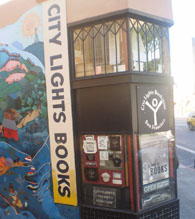
Spontaneous Praxis
Students as Spontaneous Composers: Toward a Spontaneous Praxis
What does it mean to ask students to become spontaneous composers? First, it means encouraging our students to write new media texts. Anne Frances Wysocki (2004) called new media texts “those that have been made by composers who are aware of the range of materialities of texts and who then highlight the materiality. … Such composers design texts that make as overtly visible the possible values they embody” (p. 15). Second, it means having students become active participants in and observers of their communities. To illustrate this second point, I turn to Nedra Reynolds (2004), who in Geographies of Writing: Inhabiting Places and Encountering Difference discussed the relevance of human geography for the field of rhetoric, noting that scholarship in that field has long been attentive to the ways in which people interact within certain places and spaces and what these interactions indicate about the social structures that exist within these locations; such knowledge can further the ways we in composition and rhetoric understand and negotiate difference (p. 52). While Reynolds turned to the figure of the flâneur as “one compelling example of moving through the world, dependent upon both walking and seeing—a well-known example of how place and materiality construct identity,” I resist using that metaphor for the very reasons Reynolds cited as problematic: his bourgeois status, his nonparticipation as an observer, and his masculine identity (p. 52). Yet Reynolds also noted that she used this figure as a beginning—that she was primarily interested in how to get students to engage in visual-spatial writing praxis that brings to light intersections between “place, movement, and identity” (p. 74). In response to Reynolds’s adaptation of Walter Benjamin’s flâneur, I offer the metaphor of the spontaneous composer as someone who engages in the world around them, both as agent and observer, to record their reflections about everyday interactions between people in space. Kerouac’s (2003a) “Essentials of Spontaneous Prose” provides a heuristic for visual-spatial praxis in spontaneous composing that is rooted in the everyday and encourages students to write from what they know.
In my own teaching I, like many other teachers of first-year composition, often assign texts that deal with issues of difference and inequality, texts that ask students to interrogate their assumptions about racism, gender discrimination, and class inequalities. It was my students’ resistance to discussing issues of racism in Spike Lee’s (2006) When the Levees Broke that made tangible—at least for me—the disconnect students often feel between issues of inequality we discuss in the composition classroom and issues of inequality in the everyday. I realized that if I can’t get my students to see that racism, classism, gender discrimination, and other forms of social injustice are happening every day, and in everyday spaces and places, then how can I expect them to feel invested in these issues? More frankly, how can I get them to care? As I tried to find ways to connect students’ everyday lived experiences with issues of difference and inequality, I began to work out the pedagogical methods I presented at the SVR2 Event.
With this model, students can step outside of essayist literacy practices and instead adopt spontaneous composing methods in whatever media they choose: tape recorder, sketchbook, journal, blog, Blackberry. Using the medium of their choice, students write freely about their observations and experiences in different spaces and places and move in and through different spaces and places; they do not concentrate on form, style, or correctness, but instead try to capture their own reflections and insights regarding these experiences.